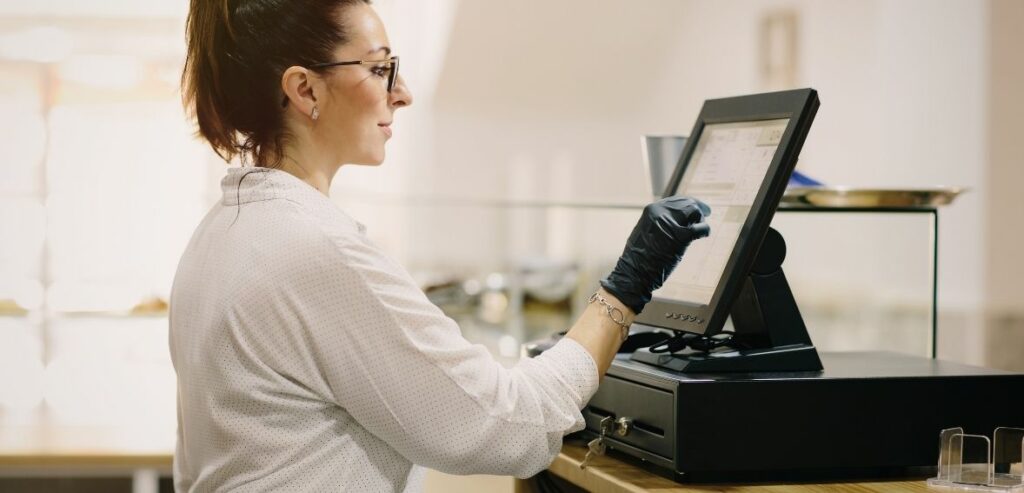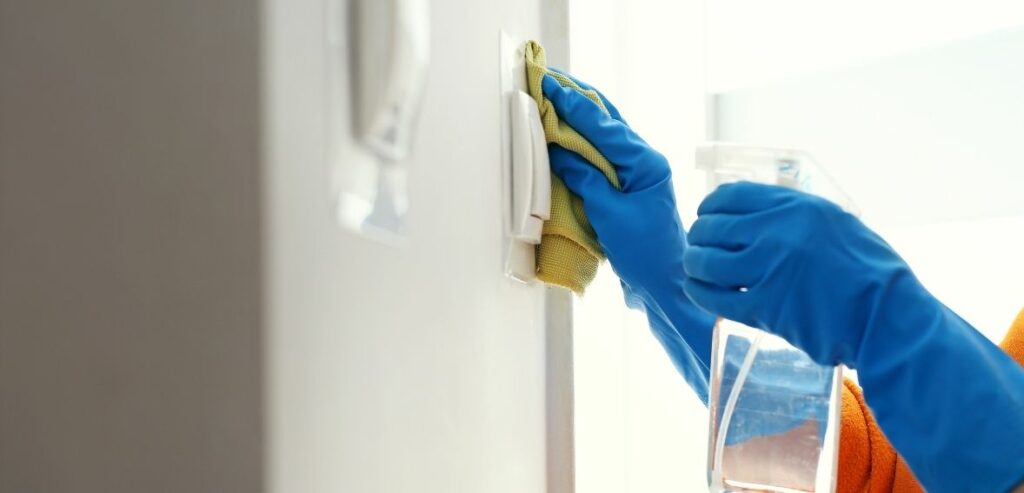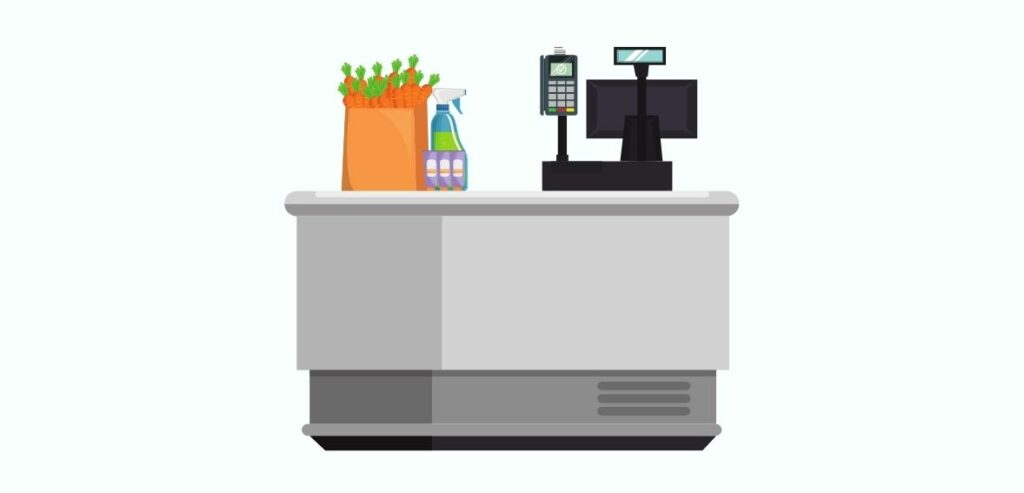When investing in high-quality POS systems, it is expected to efficiently endure the challenges of daily operations and work seamlessly without a glitch. Maintaining a clean and well-maintained store, including the POS system, is crucial for delivering a positive customer experience. However, the demands of busy and extended store operations inevitably result in wear and tear, and the system gets dirty. Consequently, regular cleaning and maintenance of the POS system are essential to ensure its smooth functionality and prolong its lifespan.
Sufficient evidence suggests that POS devices may also harbor harmful and potentially deadly pathogens such as Staphylococcus. These pathogens constitute approximately 18.53% of all microbial contamination found on POS devices. Therefore, it is crucial to understand the essential steps involved in cleaning your POS system.
To start with, here is a list of items you will need while cleaning your POS.
- Clean microfiber cloths
- Soap that’s pH-neutral and gentle
- An alcohol-based cleaner with up to 90% isopropyl alcohol
Cleaning Your POS System: 5 Steps You Should Know
As previously indicated, a point of sale (POS) system is the core of your business, and daily usage will cause it to get dirty. The dirt might come from various sources, like credit and debit cards swapped during transactions, customers touching the surfaces, etc. The dirt also consists of viruses, bacteria, and other harmful pathogens. Therefore, we have outlined below some easy but important steps for effectively cleaning your POS and other payment devices:
1. Unplug the Equipment

Remember to disconnect the POS devices from power before you start cleaning. Also, make sure to eliminate any static electricity in the system. This step is essential to avoid damaging the devices or accidentally shocking yourself.
Although there are POS systems with a “cleaning mode” feature nowadays, it’s still better to turn off the device first. Especially if you are using a highly flammable liquid like isopropyl alcohol, it’s safe to avoid any direct power source connected to the device.
Pro Tip: It is always advised to wear a clean glove before you start the cleaning process.
2. Wiping the POS System

Always wipe the POS with a dry, soft microfiber cloth to gently remove dust from the display and other equipment. Avoid rough cloths, paper towels, tissues, and napkins, which may leave lint behind and scratch your screen. If you want to clean tough marks, use a soft-bristled brush – if used gently, it will not cause any harm.
3. Cleaning the POS System

Now the soft dirt is wiped out, it’s time to clean the POS with a pH-neutral liquid soap. This type of cleaner is gentle and won’t harm your equipment. But remember to pour/spray it on the cloth instead of directly pouring or spraying it on the POS surface. Avoid the cleaner from getting inside the screen. This might cause ugly black spots and even damage the screen.
Once your cloth is slightly damp with the cleaner, gently wipe the screen in continuous circular motions. This method helps remove dirt without scratching the surface.
Pro Tip: Ammonia-based glass cleaners—any household glass cleaner — are not suitable for POS systems. These cleaners are too harsh and can ruin the screen by causing permanent discoloration or destroying the surface.
4. Disinfecting and Drying the POS System

Now that your equipment is cleaned, many germs and viruses remain—so it’s time to start disinfecting your POS system. To start the disinfecting, you will need 90% isopropyl alcohol (although 70% will also suffice). Just like the cleaning soap, avoid spraying it directly. Instead, spray a bit onto the dry microfiber cloth. This way, you avoid any risk of liquid getting into places it shouldn’t.
After that, gently clean down your device with this cloth, covering all the small corners until they look clean.
After it is thoroughly cleaned, it’s time to dry the equipment before you power it on again. To dry again, grab another soft, dry cloth towel or microfiber cloth for one final wipe-down. This step is to ensure the screen and device are dry. Moisture and electronics don’t mix well, so it’s essential to ensure everything is dry to avoid mishaps. Only after you’ve confirmed that your touchscreen POS or other equipment is completely dry should you turn it back on. This careful approach keeps your device safe and ready for use.
Things to Avoid When Cleaning a POS System

It is crucial to understand that POS is a delicate device, and when it comes to POS terminal cleaning, there is definitely a list of don’ts that you should follow at any cost to avoid damage to your device. So, let’s go over a few cleaning NO-NOs to keep your terminal safe:
- First, you should never spray any kind of liquid directly onto your POS terminal.
- Do not use bleach, undiluted alcohol, harsh detergents, solvents, or any abrasive cleaners.
- Don’t use abrasive cleaning tools like scrubs with hard bristles, scouring pads, etc. They can scratch and damage the surface.
- Never scrub hard or shake your terminal. You want to treat it gently to avoid any internal damage.
- Scrubbing hard with a dry towel or similar materials is a big no. This can create static electricity and might even set off the terminal’s tamper alert.
- Last but not least, do not clean the smart card reader yourself. Messing with this part could void the company’s warranty.
By avoiding these common mistakes, you can keep your POS terminal clean and in good working order without risking your warranty.
How to Avoid the Tamper Alert During the Cleaning of the POS?
Every terminal has a set of safety features designed for security. Tamper alert is one of the most important features provided within the system and should not be ignored. If someone tries to mess with its hardware or software, the tamper alert goes off, so you should avoid this. If this alert gets set off, you’ll see “TAMPERED” on the screen, and the terminal will stop working. And, at this point, you will not have any option but to send it to a service provider for fixing.
To avoid accidentally setting off this tamper alert during the cleaning or disinfecting process, you should follow some crucial steps:
- Double-check the “Ingredients” section at the back of your cleaning products. Look out for these things to avoid: hydrogen peroxide, bleach, trichloroethylene, thinner, or solvents made with ketones. All these ingredients can damage the system’s plastic and rubber parts so severely that, maybe after one or two uses, the terminal thinks it’s being tampered with.
- You should avoid shaking it and scrubbing it hard – always be gentle when handling the terminal.
- As we mentioned earlier, make sure you are not rubbing the terminal with a dry cloth or anything that can create friction. This can create static electricity, which might also trigger the tamper alert.
How Often Should You Clean the POS?
However, the experts recommend cleaning the POS after each transaction. This may not be possible, especially during peak hours when you have a line of customers to handle. So, it is always better to clean and disinfect your POS at least twice daily. You can clean before opening and after closing. Integrated this habit into your routine to ensure cleanliness and safety.
Additionally, you should train your staff to clean the PIN pad after a customer uses it at the checkout. They should also be well aware of some situations (like customers using oily and sweaty hands) where they might feel the need to clean the system right after the transaction.
Conclusion
Maintaining a clean and sanitized POS system is important for store owners and customers’ health and safety. The growing fear among people about hygiene issues also forces store owners to take POS cleaning seriously.
Unlike other devices, POS requires additional attention and care while cleaning. The four steps that we have discussed above, making sure to follow each step with careful consideration and adhering to recommended cleaning frequencies, preferably after each transaction or at least twice daily, contribute to a safe and efficient retail environment.
Frequently Asked Questions
How can you properly clean the POS system?
To clean your POS terminal effectively, follow these steps:
Dampen the microfiber cloth with some water,
Apply the ph-neutral cleaning solution with a cloth,
Wipe down the POS with the cloth,
After you have cleaned it, dry it out using a dry cloth to wipe the terminal.
Reconnect the device to power and power it back on.What are things that you should avoid while cleaning the POS?
Don’t use any harsh chemicals like alcohol, bleach, or ammonia, as these can damage not only the surface but discolor the POS screen. Additionally, avoid direct use of distilled water or liquid cleaners that may seep into cracks or openings, potentially causing electrical or mechanical damage.
What is the difference between disinfecting and cleaning?
Cleaning, on one hand, involves removing dirt and debris reducing the risk of spreading infections, but it doesn't kill the germs. Disinfecting on the other hand uses an alcohol-based solution to kill germs on surfaces. While it may not clean surfaces, it effectively eliminates germs.
Both of these steps are crucial when cleaning the terminal; while cleaning is more for aesthetics, disinfecting is for avoiding any contamination.How Often Should You Clean Your POS System?
Clean your POS system as often as possible to ensure better workplace hygiene. This might include wiping the PIN pad after each customer uses it, thoroughly wiping it down every hour, and thoroughly cleaning it at the end of each day. Regular cleaning contributes to a hygienic environment for staff and customers; plus, it creates a sense of obligation among the employees for a healthy business environment.

